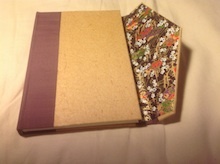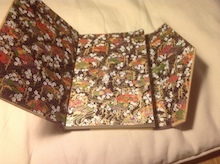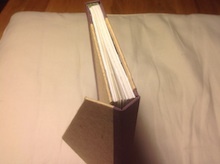Episodes

Thursday Feb 20, 2014
Episode 120: Paper Trails
Thursday Feb 20, 2014
Thursday Feb 20, 2014
 What have I been doing in the last month or so? Reading about how paper got from Cai Lun's workshop in Leiyang, Hunan province in southern China in 105 CE to Europe a mere 1200 years later. Leave it to those rascally Moslem conquerors in the Umayyad and Abbasid Caliphates in the six and seven hundreds.
What have I been doing in the last month or so? Reading about how paper got from Cai Lun's workshop in Leiyang, Hunan province in southern China in 105 CE to Europe a mere 1200 years later. Leave it to those rascally Moslem conquerors in the Umayyad and Abbasid Caliphates in the six and seven hundreds.
First, remember that the Han dynasty is from 200 BCE to 200 CE and that Cai Lun was alive from 50 to 120 CE. The Han dynasty worked out how to get silk from China to Europe via the Middle East. They did it with caravans from Xian, China to Samarkand, a city in Uzbekistan that has been conquered by everyone from Alexander the Great to Genghis Khan.
Merchants along the trade routes sell everything except the technical knowledge of how to make silk and paper. Meanwhile, the Umayyad Caliphate conquers everything from Damascus to Cordoba, Spain. Then the Abbasid Caliphate squeezes the Umayyad out of everything but Spain. The Abbasid also wants to move East toward China. The Tang Dynasty under Emperor Xuanyang objects. The two regional superpowers duke it out at the river Talas, north of Samarkand.
Merchants along the trade routes sell everything except the technical knowledge of how to make silk and paper. Meanwhile, the Umayyad Caliphate conquers everything from Damascus to Cordoba, Spain. Then the Abbasid Caliphate squeezes the Umayyad out of everything but Spain. The Abbasid also wants to move East toward China. The Tang Dynasty under Emperor Xuanyang objects. The two regional superpowers duke it out at the river Talas, north of Samarkand.

One result of this battle is that Chinese papermakers are captured, marched to Samarkand and forced to teach the caliphate how to make paper or die. Shortly after, papermaking migrates from Samarkand, across the Middle East (including Egypt, where papyrus was first used) to the remains of the Umayyad Caliphate in Spain. Spain gets papermaking knowledge in about 10th century. Italy gets it about 100 years later and by 1400 Germany acquires the skill. Gutenberg in Mainz, Germany goes crazy. (And, eventually, bankrupt.)
Now, while the Moslems of Samarkand were busy making paper, others in the Islamic community were busy making books with that paper. The developed an artistic style for the covers but they also developed a flap that can be used in two ways: to cover the fore-edge of the book and thus protect the contents from sand, wind, rain, and busy fingers; as a bookmark.
 In this episode of Tedorigawa Bookmakers you can see that I have made a book using just such a technique. I believe the book is a novel about time-traveling between Mainz, Germany in the 1450s and Istanbul, Turkey today written by myself and called The Priests of Hiroshima.
In this episode of Tedorigawa Bookmakers you can see that I have made a book using just such a technique. I believe the book is a novel about time-traveling between Mainz, Germany in the 1450s and Istanbul, Turkey today written by myself and called The Priests of Hiroshima.
Now, while the Moslems of Samarkand were busy making paper, others in the Islamic community were busy making books with that paper. The developed an artistic style for the covers but they also developed a flap that can be used in two ways: to cover the fore-edge of the book and thus protect the contents from sand, wind, rain, and busy fingers; as a bookmark.
 In this episode of Tedorigawa Bookmakers you can see that I have made a book using just such a technique. I believe the book is a novel about time-traveling between Mainz, Germany in the 1450s and Istanbul, Turkey today written by myself and called The Priests of Hiroshima.
In this episode of Tedorigawa Bookmakers you can see that I have made a book using just such a technique. I believe the book is a novel about time-traveling between Mainz, Germany in the 1450s and Istanbul, Turkey today written by myself and called The Priests of Hiroshima. Version: 20241125


No comments yet. Be the first to say something!